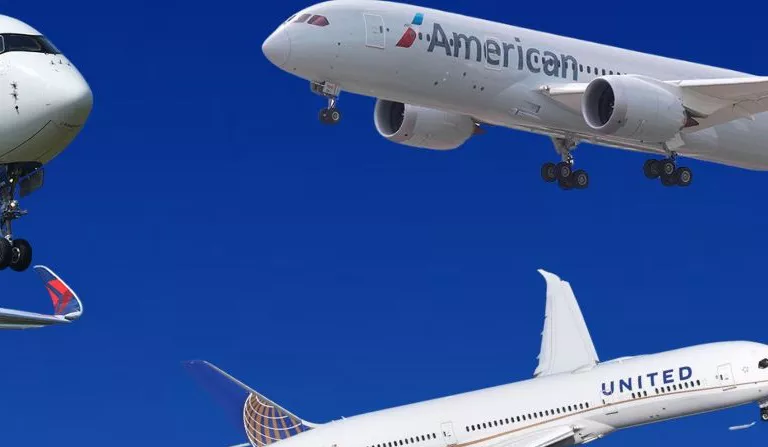British Airways (BA) and American Airlines (AA) are two prominent carriers in the global aviation industry. While they operate independently, their relationship is intertwined through strategic partnerships aimed at enhancing passenger experience and expanding their reach. This article delves into the nature of their association, examining their collaborations, competition, and the impact on travelers.
The Origins and Independent Operations
British Airways: The UK’s Flag Carrier
British Airways, established in 1974, is the United Kingdom’s primary international airline. Headquartered in London, BA serves over 170 destinations across 70 countries. The airline operates a diverse fleet of Airbus and Boeing aircraft, including models like the Airbus A380 and Boeing 777. In 2019, BA celebrated its centenary, marking 100 years of airline operations in the UK.
American Airlines: A Major U.S. Carrier
American Airlines, founded in 1930, is one of the largest carriers in the United States. Based in Fort Worth, Texas, AA operates an extensive domestic and international network. The airline’s fleet includes a mix of Airbus and Boeing aircraft, such as the Airbus A321 and Boeing 787. American Airlines is a founding member of the oneworld alliance, which it shares with British Airways and other global carriers.
Strategic Partnerships: The Atlantic Joint Business Agreement
Formation and Objectives
In 2010, British Airways and American Airlines, along with Iberia, formed the Atlantic Joint Business (AJB). This agreement allows the airlines to coordinate transatlantic flights, share revenues, and enhance route networks between North America and Europe. The collaboration aims to offer passengers more flight options, improved schedules, and competitive fares.
Benefits to Passengers
- Increased Flight Options: The AJB provides up to 70 daily flights between London and various U.S. cities, offering travelers flexibility in planning their journeys.
- Seamless Connections: Coordinated schedules facilitate smoother connections between flights, reducing layover times and enhancing travel efficiency.
- Shared Facilities: Joint operations at major airports, such as co-locating at New York’s John F. Kennedy International Airport Terminal 8, streamline the travel experience with shared lounges and facilities.
Codeshare Agreements and Global Reach
Beyond the AJB, British Airways and American Airlines engage in codeshare agreements, allowing each airline to market flights operated by the other under its own flight number. This arrangement expands the network of destinations available to passengers, particularly in regions where one airline has a stronger presence. For example, a BA passenger can book a flight from London to a secondary U.S. city using an AA-operated flight, and vice versa.
Competition and Market Presence
While BA and AA collaborate extensively, they also compete in various markets. Both airlines operate on numerous transatlantic routes, striving to offer superior services to attract passengers. This competition drives continuous improvements in in-flight offerings, customer service, and pricing strategies. Additionally, in the U.S. domestic market, American Airlines faces competition from other carriers, while British Airways focuses on its international network.
Impact on the Aviation Industry
Market Consolidation
The partnership between British Airways and American Airlines exemplifies a broader trend of consolidation in the aviation industry. By collaborating, airlines can achieve economies of scale, optimize route networks, and enhance profitability. However, such alliances also raise concerns about reduced competition on certain routes, potentially leading to higher fares and fewer choices for consumers.
Regulatory Scrutiny
Major airline partnerships like the AJB undergo rigorous scrutiny by regulatory authorities to ensure they do not violate antitrust laws or harm consumer interests. In the U.S., the Department of Justice evaluates these agreements to prevent anti-competitive practices. For instance, American Airlines’ recent request to the U.S. Supreme Court to overturn a ruling that terminated its alliance with JetBlue Airways highlights the complexities involved in airline partnerships.
Customer Experience Enhancements
Premium Services
Both British Airways and American Airlines invest heavily in enhancing the premium travel experience. British Airways, for example, unveiled a significant upgrade to its first-class cabins on its Airbus A380 jets, featuring larger, more comfortable seats, increased privacy, and advanced technology. These enhancements cater to the growing demand for luxury travel and differentiate their services in a competitive market.
Safety Records
Safety is a top priority for both airlines. In 2025, AirlineRatings.com released its list of the world’s safest full-service airlines, evaluating factors such as serious incidents, fleet age, profitability, pilot training, and certification. While neither British Airways nor American Airlines topped the list, their commitment to safety is reflected in their consistent rankings and adherence to international safety standards.
Conclusion
British Airways and American Airlines exemplify a complex relationship of collaboration and competition. Through strategic partnerships like the Atlantic Joint Business agreement, they enhance their service offerings, expand their global reach, and improve the overall travel experience for passengers. As they navigate the dynamic landscape of the aviation industry, their continued focus on innovation, customer service, and regulatory compliance will play a crucial role in shaping their future.

